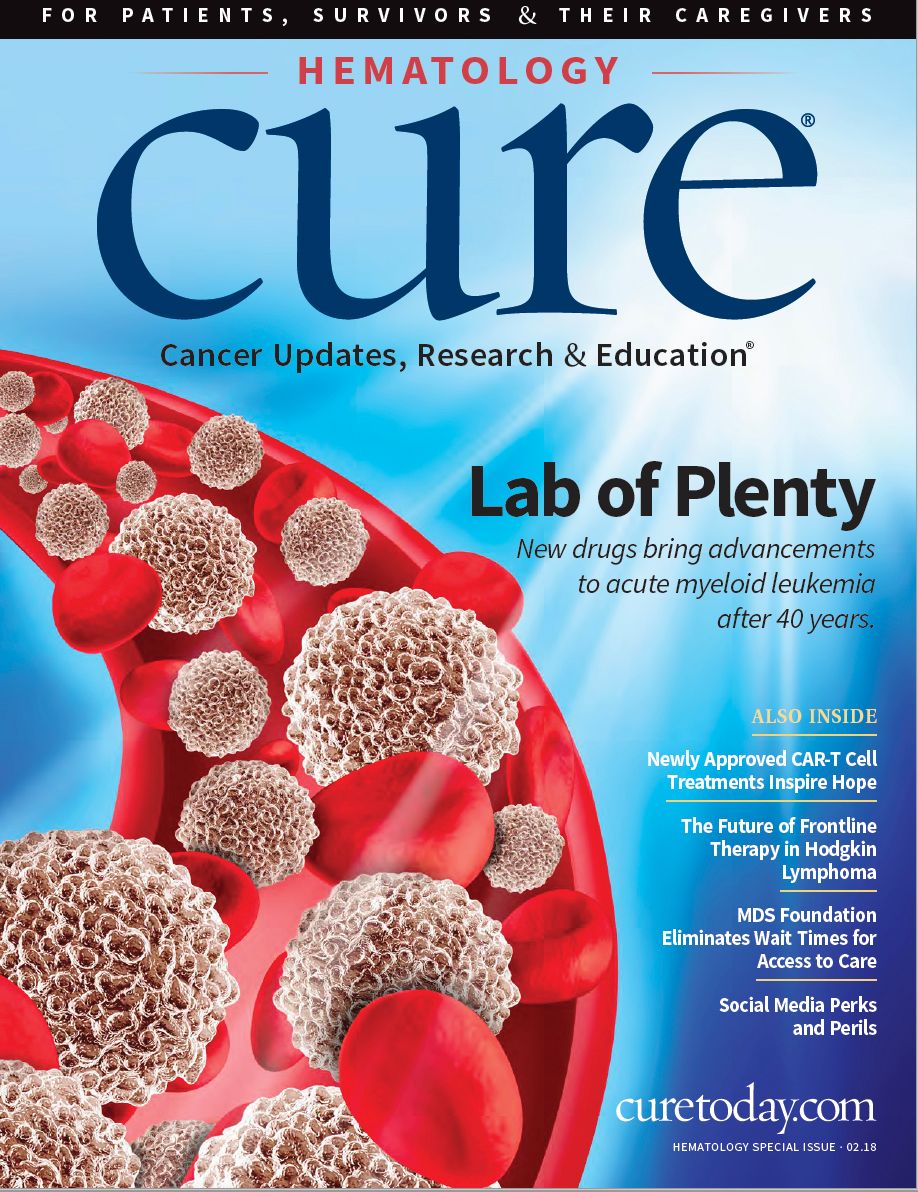Publication
Article
CURE
Better Outcomes in High-Risk Multiple Myeloma
Author(s):
Experts focus on genetic abnormalities to advance cancer care.
GENETIC ABNORMALITIES PLAY A role in multiple myeloma — and better understanding of them will improve outcomes, particularly for high-risk patients, said Shaji K. Kumar, M.D., a professor of medicine and chair of the Myeloma, Amyloidosis, Dysproteinema Group at Mayo Clinic in Rochester, Minn., during his talk at the 35th Annual CFS®.
“Over the years, as we have understood the biology of this disease better, it has become more clear that myeloma is not just one disease, and as multiple myeloma has become richer, so to speak, the divide between the rich and the poor has become even wider,” he said in reference to subgroups of patients for whom there are and are not effective treatment strategies.
“We still have over a quarter of these patients who are dying within the first three years,” even though median overall survival for patients with multiple myeloma is now eight to 10 years and improving, Kumar said. Targeting translocations, trisomies and chromosomal deletions is the key to superior outcomes, he added: “What is clear is that when patients have one or more of these abnormalities, their outcome is much poorer compared with the remaining patients.”
Fluorescence in situ hybridization (FISH) — a technique researchers use to visualize and map the genetic material in an individual’s cells — continues to be useful for diagnosing underlying causes of tumor growth, but there is a need for greater clarity in characterization of disease drivers for an appropriate therapeutic response, Kumar said.
“Unfortunately, FISH isn’t the answer to everything. It’s the most easily accessible test that we have,” he said. “The problem with the FISH testing is we all have patients now in our practice who may have del(17p) (a chromosomal deletion) or the t(4;14) translocation (a chromosomal translocation) who do much better than what we would have expected them to, and the reverse is also true.”
This has created huge interest in developing techniques that may be more specific in identifying patients with highrisk myeloma. These are necessary to tailor therapy according to intensity of duration and specific agents, which cannot be so easily accomplished on FISH alone, Kumar said.
FISH can effectively be used in conjunction with the International Staging System and other tests, such as gene expression-based classifications, which include a 70-gene prognostic signature, developed by the University of Arkansas for Medical Science, and a 92-gene signature test from SkylineDX, a Dutch molecular diagnostics company, he said.
Recent efforts to sequence the genome of relapsed multiple myeloma helped identify the most common mutations, such as KRAS and NRAS, some of which also have prognostic value. Involvement of del(17p) and mutated DNA repair genes can portend outcomes, but sequencing also holds the promise of “being able to develop therapies that are specifically targeted toward the underlying mutations,” Kumar said.
Such initiatives could also help high-risk populations, such as patients with plasma cell leukemia, “although this is a very small proportion of patients with myeloma, their outcomes are extremely poor, and — even though they have improved a bit — we’re still looking at median or overall survival of less than two years,” he said.
Ten years ago, the resources for such disease was limited to alkylating agents, anthracyclines and corticosteroids. Today’s tool kit holds significantly more — and more effective — options. Proteasome inhibitors, immunomodulatory agents, histone deacetylase inhibitors and monoclonal antibodies are now at a physician’s disposal.
“We have a whole host of new therapies, so we have a choice. We need to find out what is the best combination of these different choices that could make a difference to these patients with high-risk multiple myeloma,” Kumar said.
Tailoring such therapies to fit the patient and disease state could involve using specific drugs or drug classes, combining drugs, varying therapy duration and targeting a particular level of response, such as complete response or minimal residual disease negativity.
Kumar provided a few examples of new approaches that are working, such as use of the proteasome inhibitor Velcade (bortezomib) in cases of t(4;14) translocation. “Both in the newly diagnosed and the relapsed setting, what has become clear is that when you treat patients with bortezomib for a long period of time, there seems to be a significantly improved outcome compared with what we have historically seen in these patients,” he said.
Tandem autologous stem cell transplants (ASCTs) in cases of del(17p) with or without t(4;14) also are promising, Kumar noted. At 48 months, 76 percent of patients were alive following tandem ASCT, as opposed to 33 percent for a single ASCT, following Velcade-based induction regimens, according to trial results published in 2013.
“These data also seem to be borne out by some of the more recent trials, which looked at tandem versus single transplants. There is some suggestion that patients with high-risk abnormalities do benefit from tandem ASCTs,” Kumar said.




